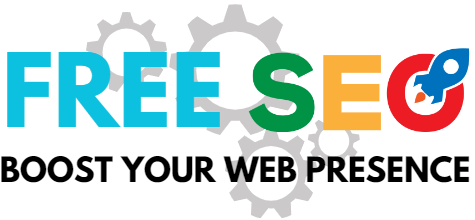In digital marketing, SEO (Search Engine Optimization) is critical for driving organic traffic and ensuring online visibility. However, navigating the complexities of SEO can be challenging, and even seasoned marketers can fall prey to common SEO Mistakes to Avoid that undermine their efforts. This article delves into some of the most frequent SEO pitfalls and provides actionable strategies to fix them, helping you optimize your website effectively.

Keyword Research Mistakes
Ignoring Long-Tail Keywords
One of the most prevalent SEO mistakes is neglecting long-tail keywords. While short, broad keywords might attract more traffic, they are also highly competitive. Long-tail keywords, which are longer and more specific, may attract less traffic individually but can drive significant targeted traffic with less competition cumulatively.
Overlooking Keyword Intent
Another critical error is not considering keyword intent. Keywords can be informational, navigational, or transactional. Focusing solely on search volume without understanding the user’s intent behind the query can lead to irrelevant traffic that doesn’t convert.
Fix: Effective Keyword Research Strategies
Conduct comprehensive keyword research using tools like Google Keyword Planner, Ahrefs, or SEMrush to avoid these pitfalls. Focus on identifying long-tail keywords relevant to your niche and understand their intent. Incorporate these keywords into your content to attract and engage your target audience.
Content Quality Issues
Thin Content
Thin content refers to pages with little valuable information, which can lead to poor user experience and lower rankings. Google’s algorithms are sophisticated enough to identify and penalize sites with thin content.
Duplicate Content
Duplicate content is another common issue. It occurs when identical or substantially similar content appears on multiple pages of your site or across different sites. This can confuse search engines and dilute your SEO efforts.
Fix: Creating High-Quality, Original Content
To remedy these issues, focus on producing high-quality, original content that provides value to your readers. Conduct thorough research on your topics, use data and insights to back up your points, and ensure your content is comprehensive and engaging. Regularly audit your site for duplicate content and use canonical tags where necessary to indicate the preferred version of a page to search engines.
On-Page SEO Errors
Poorly Optimized Title Tags and Meta Descriptions
Title tags and meta descriptions play a crucial role in on-page SEO, as they help search engines understand the content of your pages. However, many websites suffer from poorly optimized or missing title tags and meta descriptions, leading to missed opportunities for better rankings and click-through rates.
Lack of Header Tags (H1, H2, H3, etc.)
Using header tags appropriately helps structure your content and makes it easier for users and search engines to navigate. A common mistake is overusing or underusing these tags, which can impact the readability and SEO of your content.
Fix: Best Practices for On-Page SEO
Ensure each page on your site has a unique, descriptive title tag and meta description that includes relevant keywords. Use header tags to organize your content hierarchically, starting with an H1 tag for the main title, then H2 and H3 for subheadings. This improves readability and helps search engines better understand the structure and key points of your content.
Technical SEO Problems
Slow Page Load Speed
Page load speed is a critical ranking factor, and slow-loading pages can frustrate users, leading to higher bounce rates. Common causes include unoptimized images, excessive plugin use, and poor server performance.
Broken Links and 404 Errors
Broken links and 404 errors harm user experience and signal to search engines that your site may not be well-maintained, which can negatively impact your rankings.
Fix: Technical SEO Best Practices
Optimize your site’s load speed by compressing images, minimizing the use of heavy scripts, and leveraging browser caching. Regularly conduct site audits to identify and fix broken links and 404 errors. Use tools like Google Search Console to monitor your site’s performance and ensure it is technically sound.
Poor Mobile Optimization
Non-Responsive Design
With the increasing use of mobile devices, a non-responsive design is a significant SEO mistake. If your site isn’t optimized for mobile, you’re likely losing considerable traffic and potential customers.
Fix: Embracing Mobile-First Design
Implement a mobile-first design strategy to ensure your site provides a seamless experience across all devices. Use responsive web design techniques to adapt your content and layout to various screen sizes, and test your site’s mobile performance using tools like Google’s Mobile-Friendly Test.
Ignoring Analytics and Data
Lack of Monitoring and Adjustment
SEO is not a set-it-and-forget-it strategy. Failing to monitor your performance and adjust your tactics based on data can lead to missed opportunities and continued poor performance.
Fix: Regular SEO Audits and Adjustments
Use tools like Google Analytics and Google Search Console to track your SEO performance regularly. Analyze key metrics such as traffic, bounce rate, and conversions to understand what’s working and what needs improvement. Conduct regular SEO audits to identify and address any issues promptly.
Conclusion
Avoiding common SEO mistakes is crucial for enhancing your website’s visibility and driving organic traffic. You can create a robust SEO strategy that delivers long-term success by understanding and addressing issues related to keyword research, content quality, on-page optimization, technical SEO, mobile optimization, and data monitoring.
FAQs
- What are long-tail keywords, and why are they important? Long-tail keywords are longer, more specific keyword phrases that visitors are more likely to use when they’re closer to purchasing or finding specific information. They are important because they have lower competition and higher conversion rates.
- How can I identify duplicate content on my site? You can use tools like Copyscape, Siteliner, and Google Search Console to identify and address duplicate content issues on your site.
- Why is page load speed crucial for SEO? Page load speed affects user experience and is a ranking factor for search engines. Faster pages improve user satisfaction and are more likely to rank higher in search results.
- What is the role of header tags in SEO? Header tags (H1, H2, H3, etc.) help structure your content, making it easier for search engines to understand and for users to read. They play a crucial role in on-page SEO.
- How often should I conduct an SEO audit? It’s advisable to conduct an SEO audit at least twice a year or more frequently if you’re making significant changes to your site or noticing a drop in performance. Regular audits help identify and fix issues promptly, ensuring optimal site performance.



